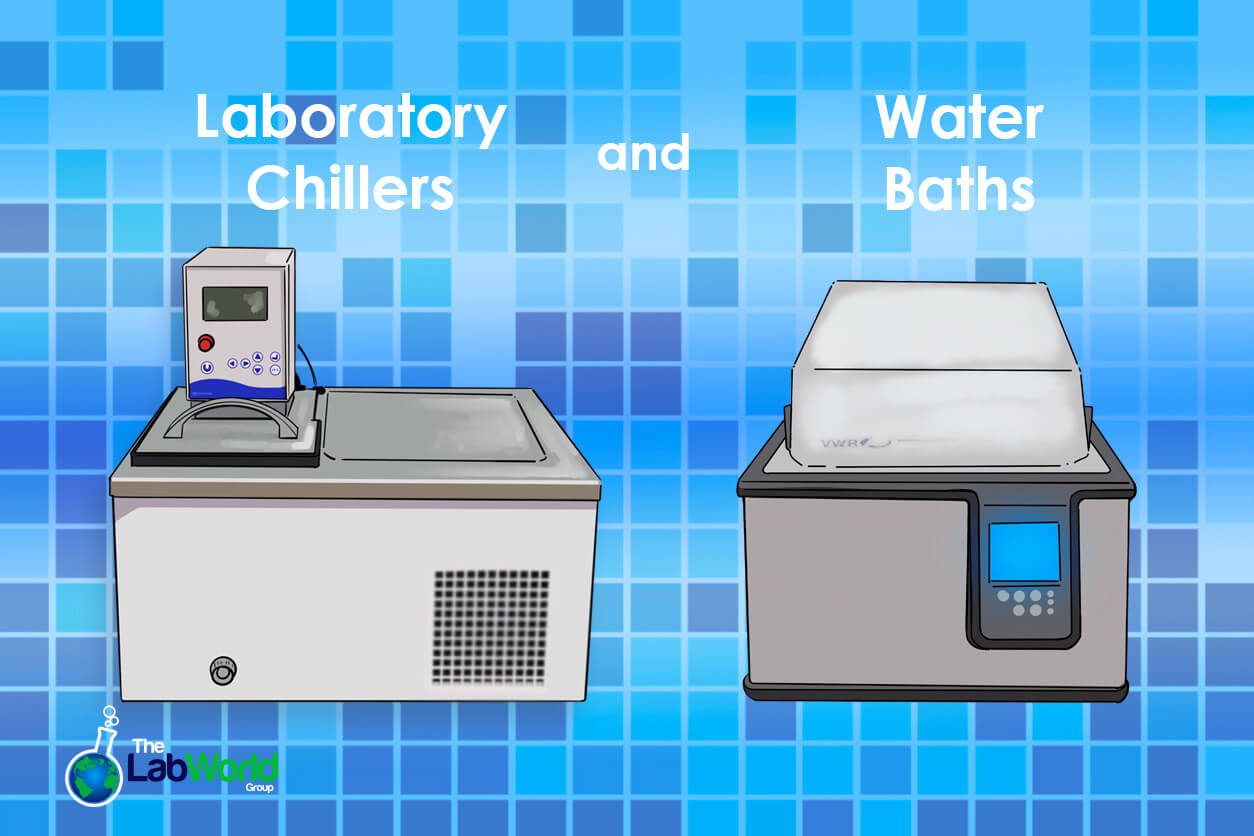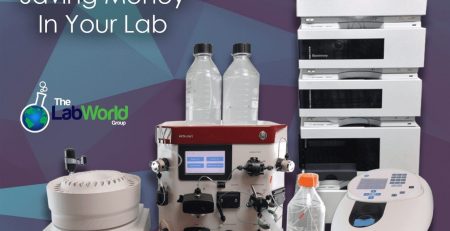
Lab Chillers and Water Baths
Amanda2023-03-03T15:33:12+00:00Lab Chillers and Water Baths
Lab Chillers and their cousins, Scientific Water Baths, provide labs with a way of controlling temperatures in their experiments and applications. They’re useful in just about every discipline in some form or another, from slowing or speeding reactions to cooling lasers or condensates. Here we’ll take a look at the different types of equipment you may find and their capabilities and their limitations.
Lab Chillers vs Water Baths
These frequently used lab instruments offer a degree of control in assays and processes. Being able to manage the temperature either above or below room temperature at which reactions occur means a greater rate of success and getting repeatable results. The main difference, though not always the case, is that water baths provide heating conditions through heating elements and lab chillers use compressors to remove heat, though most lab chillers include both heat and cooling capabilities. Water baths can sometimes include additional forms of agitation for an assay such as reciprocating or shaking action, circulation for uniformity, and sonication for debris removal.
Lab Chiller and Water Bath Types
When selecting one of these popular instruments, there are factors to consider. What level of precision do you need? Will you be immersing a container directly in a bath? Are you looking to cool equipment and need a flow rate that can maintain pressure over a distance?
If surrounding a vessel is your aim, immersion circulators, circulating water baths, and utility and stirless water baths are great options. These can vary in volume from a very small few liters to several gallons. Utility and stirless water baths and chillers are often one piece of equipment with the controller, heating element, and/or compressor and chamber in one. These will include features such as drain spouts for easy emptying, backup thermostats to prevent temperatures from running away from you, and emergency cut-offs in case of an electrical problem.
Water baths and chillers can also range in the degree of control you have. Some operate simply with parameters being dialed in from a mechanical thermostat, or when more precision is required some models feature digital controls. If changing temperatures throughout an assay or process is necessary you may want to consider a model that features not only digital control but also memory and programmability. Having the ability to pre-program changes to not only the temperature but also how long the medium stays at that temperature can free up your workflow. But keep in mind that these characteristics will increase the cost of the instrument. It may be an initial upfront cost but the time saved could make up for it.
Circulating baths and chillers surround items with a consistent flow of treated water or medium, this means avoiding hot or cold spots. These instruments involve a pump, so paying attention to the strength of the pump and the distance it can cover, the speeds it can reach, volumes it’s ideal for is essential. Circulators can be used in a reservoir situation like a simple tub, partnered with an additional compressor chilled bath, or as an open or closed loop for external applications.
Circulators vs Closed Loops
To move the conditioned water externally away from the chiller and through the lab, you need tubing and proper pressure. The efficacy of moving that water can largely depend on the distance you’re covering, and the power of the pump. Chillers labeled recirculating chillers will have ports on the back of the system that allows users to attach tubing that can then be threaded through the lab to where the application is. Close to the chiller is best, but sometimes distances can not be helped, so paying attention to flow rate and water pressure is key in situations where you know you’ve some distance to cover. The further the water has to travel the more sharply the pressure drops.
Pumps for lab chillers typically fall into two categories, positive displacement pumps such as rotary vane or reciprocating, or centrifugal pumps. A positive displacement pump is ideal for high-viscosity liquids and constant flow needs. A centrifugal pump won’t have the same pressure oomph, however, if you’re not using thick liquids, they are less expensive, have high flow rates, and take less to maintain.
Mediums for cooling or heating in a lab chiller or water bath
Cooling and heating applications can further be influenced by the types of medium used. Water is the most basic and efficient thanks to its high heat capacity and conductivity, it’s also readily available from the tap. Untreated tap water and its impurities such as salts and minerals can settle in your system and lead to clogging so be sure to descale as part of regular maintenance or use a filtration system for lab water. Water also may corrode metal that’s not stainless or copper, such as aluminum. Pure water, however, water that’s been deionized faces a different challenge of a pH drop, making it acidic when exposed to air. If you’re going to use that in your chiller you’ll need to make sure stainless steel tubing is in place.
To drop water temperatures below freezing chillers will require the addition of glycol, either as ethylene glycol or propylene glycol and water mixture. Ethylene is the more common, however, in cases where food may be involved, Propylene is preferred. Applications working with semiconductors often use Dielectric fluids that are nonconductive and less corrosive than deionized water.
As an alternative to heating with water, water baths can be operated with thermal beads. These aluminum beads create a dry heating environment that protects against waterborne contaminants, uses less energy than water and is ideal for vessels that may be oddly shaped or aren’t watertight.
Final Thoughts
Conditioning water to augment research and development applications has a long history. Over the years that process has evolved from simple ice baths and boiling water to tightly controlled temperatures, and sophisticated mediums in just about any scale required. With so many options and features to consider it can be a hard field to narrow down. Over the years we’ve carried many tried and true brands with proven reliability and ease of use. If you need help zeroing in on the right instrument, reach out to us, and we can help you select the right tool for the job.













